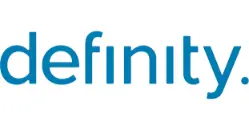Change leadership is the practice of leading people through planned and emergent change in the workplace. Briefly, change leadership is about shaping a culture of adaptability. In our modern world, teams don’t just react to change but are empowered to drive it. This ensures that organisations stay relevant and competitive in an ever-evolving business landscape.

Unlike change management, which tends to focus on the delivery of change with the use of processes and tools, change leadership is more about guiding and influencing people through change.
Change leadership is strategic – while change management is operational. The change leader creates the vision and shares key messages, the change manager creates the communication plan to support the leader. The change leader addresses the risks and removes obstacles to success, the change manager identifies, plans, manages the risk mitigations.
It can even hinder the achievement of business goals. When leaders are unable to successfully implement or steer change, this can lead to employee confusion and a decline in morale. In this environment, teams can quickly lose sight of the organisation’s central goals.
Change leadership is a critical part of today’s dynamic business landscape. It provides clear direction amongst all the uncertainty. Leaders can ensure that organisations not only adapt to shifting circumstances but also thrive.
Effective change leadership cultivates a culture of agility and resilience. As challenges arise, organisations with strong change leadership are better equipped to pivot, innovate, and maintain momentum, ensuring long-term success.


It’s hard to push back on the plan, if you’ve taken part in designing it. Bring in the end audience in the design of what the change is, and how you will roll out the change. Beyond reducing resistance to change, you may actually be designing a better change!
Make sure you know what else is going on that could get in the way of your change OR could be an opportunity to leverage. Make the time to speak with other leaders and find out what’s happening in their parts of the business. Generate a change radar that tells you what is dropping at what point. Clear the runway for your change or juice it up.
Bringing in something new is not the time to be stingy and expect your managers and employees to wear multiple hats. Multi-tasking during change means everything is compromised. Create backfill for your employees, resource with dedicated change practitioners who understand both Agile and business agility and can show they have invested in upskilling in this space.
To wait for perfect information is to create a vacuum, and that vacuum will surely be filled with rumour and innuendo. Neuroscience tells us our brains crave certainty and will react with high emotion when we are left in limbo.
Continuous engagement is one of our three agile change capabilities. Change resistance is inversely proportional to the amount of stakeholder engagement that occurs. You don’t need a strategy to deal with the blockers. You just need to engage with people who will be impacted by the change. Engage with empathy, curiosity and frequently.
Purpose is bigger than What’s In it for me? (WIIFM). Purpose is big, enduring, the reason why people get out of bed to go to work enthusiastically. If you can align your change with purpose, people get it. It makes sense. If it’s not aligned to the companies’ purpose, then forget about it.
The fish rots from the head. If your leadership team is not fully and visibly committed, you can’t expect anyone else to make the changes. A fully committed leadership team will override poorly designed change every time.
Change leadership has evolved over the last thirty years to a more democratic and participative practice. Modern change leadership is more collaborative and inclusive. It prioritises effective communication and collaboration. The role of a change leader today is not just to dictate change but to inspire, motivate, and co-create solutions, ensuring that organisations stay agile and resilient in a constantly changing landscape. There is more space for leaders who don’t always fit the ‘strong charismatic transformational’ leader.
New ways of working need new ways of leading. Recent times have turned how we need to lead has been turned on its head. In times of extreme uncertainty, we need new ways of leading!
As we emerge from a period of crisis, we enter a vulnerable time when we may revert to older practices. But we also have a unique opportunity to capture what we learned from the imposed change along with rapid decision making and adoption.
In today’s rapidly evolving world, change is occurring faster than ever, and we may not always know what the future will look like, or how we need to respond as a result. Therefore, rather than focusing on processes, change leadership has shifted more to a people-based approach. After all, successful change hinges on people’s engagement, understanding, and enthusiasm.
Modern change leadership is more collaborative and inclusive. It prioritises effective communication and collaboration. The role of a change leader today is not just to dictate change but to inspire, motivate, and co-create solutions, ensuring that organisations stay agile and resilient in a constantly changing landscape.
Agile Change Leadership is a leadership approach for organisations that are going through continuous change at pace. It applies to both leading business agility transformation and leading organisations that use an agile approach to technology and product delivery.
The foundations of the Agile Change Leadership approach are having an agile mindset and taking a human centred, agile approach to leading. They build psychological safety and are comfortable with failure as part of the learning culture.
Leaders who succeed in Agile Change Leadership are flexible in application of style of leadership approach often drawing upon servant leadership, distributed leadership and adaptive leadership approaches.
When you witness their work, you see they have distinct personal qualities such as curiosity, empathy and a comfort with vulnerability. It’s not uncommon to see agile change leaders building change resilience and change readiness, in favour of focusing on change resistance.
Agile Change Leaders know the power of community and how it can galvanise sustainable change momentum. They use multiple nuanced change communication approaches to co-create and collaborate.
Leaders need to be agile in a workplace that is characterised by volatility, uncertainty, complexity and ambiguity. Change is relentless and the pressure to show an agile mindset is extreme.
To some extent the challenge for agile change leaders is both to be a custodian of nurturing an organisational culture that supports continuous disruption, and drive performance, outcomes and efficiency at speed.
While it seems daunting, the agile change leaders we know, wouldn’t have it any other way. They often tell us that learning to lead confidently through continuing disruption and change at speed is personally transformative and they feel liberated.
"*" indicates required fields






























We specialise in contemporary change management and leadership, enabling you and your team to develop the confidence and capability to handle fast-paced change.
Select your desired option below to share a direct link to this page.
Your friends or family will thank you later.